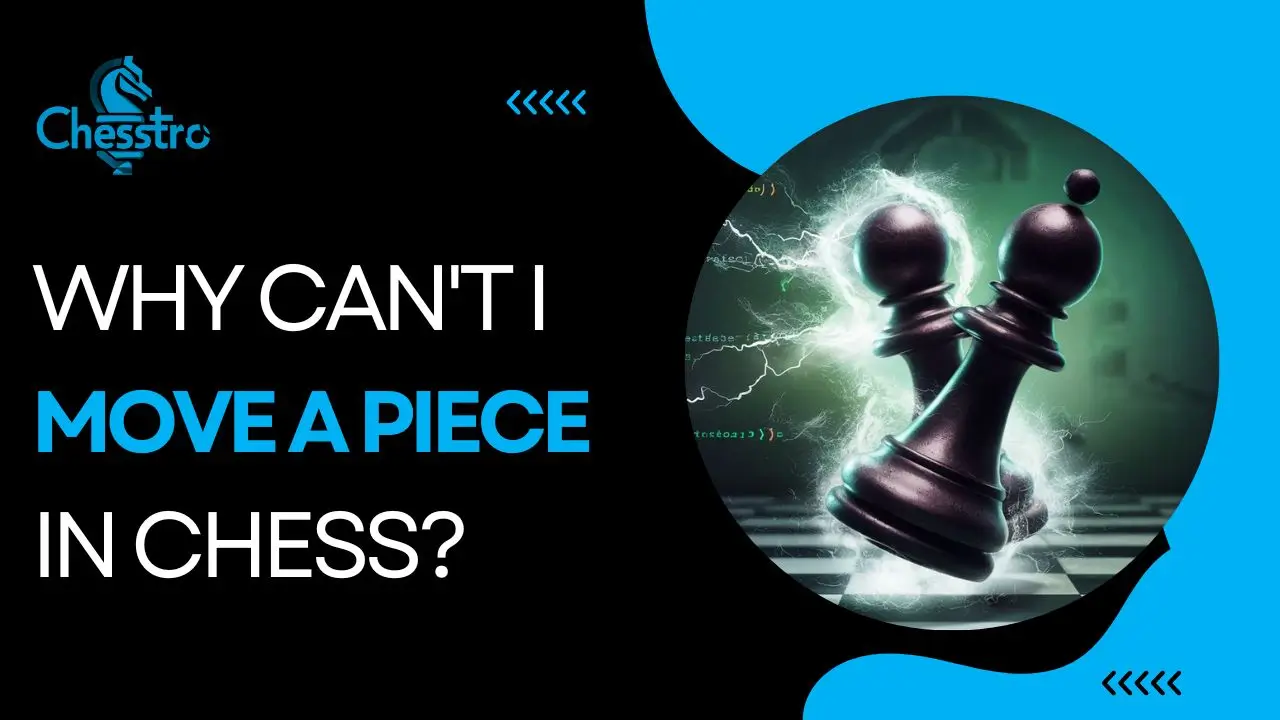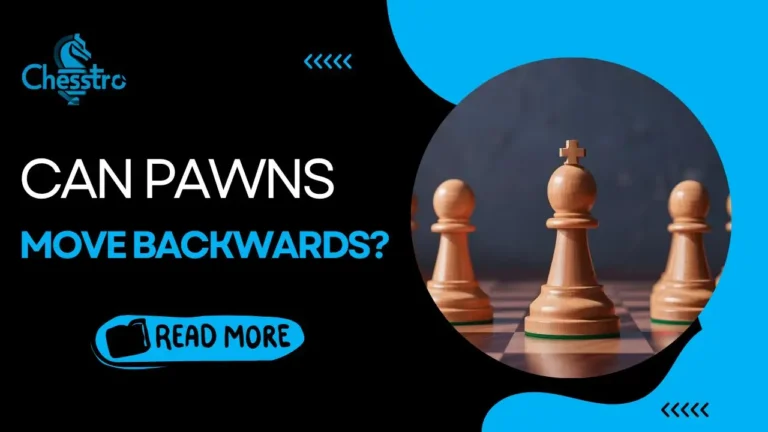Why can’t I move a piece in chess
In chess, certain rules can make moving a piece tricky. For instance, a piece might be pinned and unable to move without exposing the king to check.
Sometimes, you may move a pawn two squares forward from its starting position after its first move, which isn’t allowed.
Or, your piece could be blocked by your own or your opponent’s pieces. Understanding these scenarios is crucial to improving your game and avoiding frustration. Our guide will help you navigate these common issues so you can make legal, strategic moves with confidence.
You can also learn more about Why Are Some Chess Boards Green?
What Rules Prevent You From Moving A Piece In Chess?
Chess is a strategy game in which each player has different types of pieces, each moving uniquely.
Pawns, for example, can only move forward. They can move two squares on their first move and one square after that. They capture other pieces by moving diagonally. They can’t move backward or sideways.
Bishops can only move diagonally across the board, while rooks can move straight up, down, or sideways.

Knights move in an L-shape and are the only pieces that can jump over others.
You can also learn more about Why is f2 weak in chess?
Some pieces can block the path of others, and you can’t move a piece if it would put your king in danger. This is called being in “check”.
The goal of the game is to use your pieces to trap your opponent’s king so it can’t escape, which is called “checkmate.”
The rules of chess make it a challenging game. You need to think carefully about each move to try to outsmart your opponent.
What Happens If You Attempt An Illegal Move In Chess?
In chess, there are rules about how each piece can move. Sometimes, a player might try to move a piece in a way that breaks these rules. This is called an ‘illegal move’. So, what happens if you try to pull one of these illegal moves?
In a friendly game at home or in the park, if you make an illegal move, someone might point it out. If that happens, you go back to how the pieces were before and carry on with the game. If the piece you touched can be moved legally, you have to move it.
You can also learn more about Can You Castle If Rook Is Under Attack?
But, in a serious competition, things are different. If you make an illegal move, the other player can say they’ve won the game right there. But they have to do this before they make their next move. If they don’t, the game continues. If the illegal move is found later, you rewind to before it happened and play on.
What about online chess? Well, the computer won’t let you make an illegal move. If you try, it will just tell you to pick another move.
And in fast-paced games like blitz and rapid chess? If you make an illegal move, your opponent can claim they’ve won. But if they make a move without claiming the win, the game goes on.
If both players make an illegal move, the game continues. So, in these fast games, you’ve got to keep your eyes peeled!
You can also learn more about Where are the chess hustlers
Why Are Certain Pieces Restricted From Moving In Chess?
Chess is a game that maintains balance and strategic depth by restricting certain pieces from moving in certain ways.
Each piece in chess has unique rules governing its movement, and players must understand these restrictions to play effectively.
For instance, pawns can only move forward, one square at a time, except during their initial move when they can advance two squares.
This restriction adds complexity as players need to plan their pawn structure carefully and consider the consequences of each move.

The king, on the other hand, can move only one square in any direction, preventing it from straying too far from the protection of different pieces.
This restriction enhances the king’s safety and becomes a focal point of strategic gameplay.
You can also learn more about What is the 20-40-40 rule in Chess?
By imposing restrictions on certain piece movements, chess preserves its meticulous nature, encourages deep thinking, and ensures that victory can only be achieved through careful planning, foresight, and creative maneuvering.
Why Can’t I Move My Knight In A Straight Line?
The unique movement pattern of a knight in the game of chess is due to the intricate rules and designs of the game.
Unlike most chess pieces that move in straight lines or diagonal paths, the knight moves in an L-shape, which enables it to jump over other pieces.
This movement pattern makes it a potent and strategic piece on the board. However, the knight cannot move in a straight line, which maintains the game’s balance and complexity.
This restriction also forces players to develop alternative strategies and plan their moves carefully.
The L-shaped pathway of the knight adds an element of surprise and unpredictability to the game, making it challenging for players to devise creative tactics.
You can also learn more about Why is Blitz chess so popular?
Therefore, limiting the knight’s movement is an essential feature of the game’s mechanics, which enhances its depth and intellectual appeal.
How Does “Check” Impact Your Ability To Move Certain Pieces In Chess?
In chess, the concept of check determines the movement of certain pieces on the chessboard.
When a player delivers a check to the opponent’s king, it notifies them that their king is under threat of capture and subsequently restricts their ability to move certain pieces.
As a result, the player under check must prioritize the safety of their king and allocate valuable moves to escaping or defending against the threat.
This often limits their options, as certain pieces may no longer be able to move freely or participate in attacks or defenses elsewhere on the board.
For example, if a player’s king is in check, their rook may be prevented from leaving his defensive position to support an attack on the other side of the board.
Therefore, checks act as a powerful strategic tool by forcing players to adapt their plans and prioritize king safety, ultimately influencing their ability to maneuver specific pieces effectively.
Why Can’t I Move A Piece If It Violates The Rules Of Promotion?
When it comes to the game of chess, the rules of promotion underscore the intrinsic nature of the game and maintain its strategic balance.
Promotion occurs when a pawn reaches the opposite end of the board, granting it the opportunity to be transformed into any other piece, namely a queen, rook, bishop, or knight.
You can also learn more about Can You Use Two Hands in Chess?
Each piece possesses distinct abilities, and promoting a pawn ensures that the newly acquired piece is proportional to the skill level achieved.
Thus, it is impossible to move a piece in violation of the rules of promotion, as this would disrupt the strategic foundations and ultimately compromise the integrity of the game.
By adhering to these rules, chess cultivates an environment where careful planning, calculated moves, and strategic thinking merge to create an engaging experience.
The limitations placed on piece movement contribute to the game’s complexity and challenge, fostering a sense of excitement as players strategize within the boundaries of promotion rules.
Final thoughts:
Understanding the rules that restrict piece movement in chess is crucial for strategic gameplay. These limitations maintain balance, encourage deep thinking, and ensure victory through careful planning and creative maneuvers.
Additionally, the concept of “check” impacts a player’s ability to move certain pieces, adding an element of urgency and complexity to the game. Embracing these rules enhances the intellectual appeal of chess, making it a challenging and rewarding pursuit for players of all ages.







